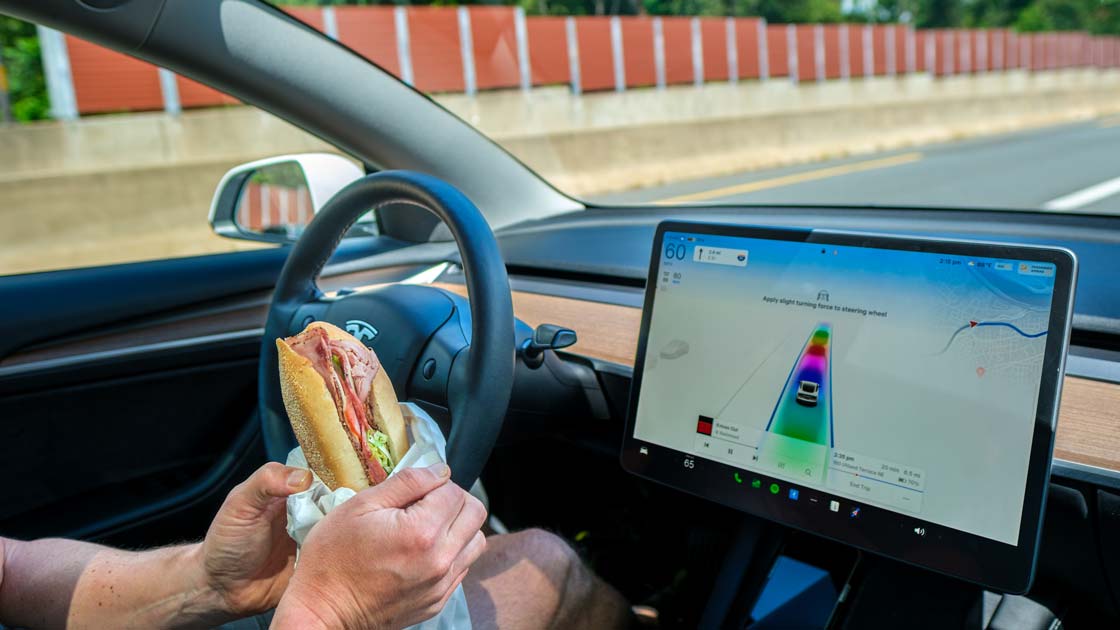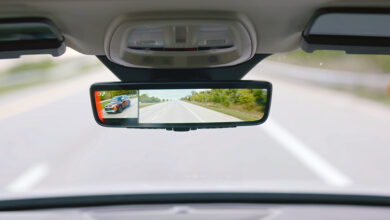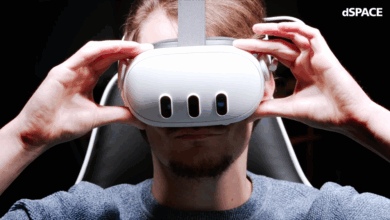IIHS Releases Autonomous Driving Report
The report found that drivers with autonomous systems were more likely to multitask while driving...

Drivers are more likely to multitask when using partial automation, according to new research from the Insurance Institute for Highway Safety.
“These results are a good reminder of the way people learn,” said IIHS President David Harkey. “If you train them to think that paying attention means nudging the steering wheel every few seconds, then that’s exactly what they’ll do.”
Drivers were much more likely to check their phones or do other visual-manual activities while using Volvo’s Pilot Assist partial automation system than when driving unassisted, a monthlong study of driver behavior that IIHS conducted with the Massachusetts Institute of Technology’s AgeLab showed. The tendency to multitask also increased over time for some drivers as they grew more comfortable with the technology.
Meanwhile, drivers using Tesla’s Autopilot system quickly mastered the timing interval of its attention reminder feature so that they could prevent warnings from escalating to more serious interventions, another IIHS-AgeLab study found. Some people used this skill to continue engaging in distracting behaviors, punctuated by quick moves to stop the alerts.
“In both these studies, drivers adapted their behavior to engage in distracting activities,” Harkey said. “This demonstrates why partial automation systems need more robust safeguards.”
In the first study, researchers analyzed how the driving behavior of 29 volunteers supplied with a 2017 Volvo S90 sedan equipped with Pilot Assist evolved over a four-week period. Specifically, they examined how likely drivers were to engage in nondriving activities when using the automation on highways relative to driving unassisted and then evaluated how this relationship changed over time.
The study, led by Ian Reagan, an IIHS senior research scientist, used data collected over three years, during which the vehicles driven by the volunteers received two software updates that improved the lane-centering feature and attention reminders.
Researchers separated the drivers into three groups. One group did all their driving before either update, a second drove the vehicles after the changes to the lane-centering feature, and a third did their driving after both the lane-centering feature and the attention reminder updates. All versions required the driver to keep their hands on the steering wheel.
Regardless of the version of the system used, all three groups of drivers engaged in distracting visual-manual activities, including eating, grooming and using electronics, more often when using Pilot Assist than while driving without it. This was true whether they used the feature a lot or hardly at all.
The first two groups were more likely to be distracted while driving with Pilot Assist during the second half of the month they had the vehicle than the first.
Like the results of an earlier, related study, this suggests that drivers became bolder or more complacent as they got used to the system. The third group was about equally likely to perform secondary tasks while using partial automation over the second two weeks as they were during the first two weeks. Throughout the month, the percentage of time that they were distracted while using it was exceedingly high — more than 30%.
“We saw some differences in how the three groups used Pilot Assist, but we couldn’t say for sure they were related to the software changes,” Reagan said. “The takeaway for me was that the technology was linked to more distraction for all three.”
In the second study, a different group of IIHS and AgeLab researchers examined how the driving behavior of 14 people who had never used Tesla’s Autopilot or any other partial automation system changed over a month of driving a 2020 Tesla Model 3. Unlike the Volvo study, this one focused on how often the drivers triggered the system’s initial attention reminders, escalated warnings and emergency slowdown and lockout procedures.
At the time, Autopilot relied exclusively on a torque sensor in the steering wheel to monitor whether the driver was paying attention. If the system failed to detect the driver’s hands on the wheel for a short time, it would issue an initial attention reminder — a gray hands-on-wheel icon that appeared on the central display, along with a flashing blue light and a written message instructing the driver to apply a slight turning force to the steering wheel.
If the system didn’t detect a driver response soon enough, it would begin a series of escalating visual and audible alarms and alerts. As a last resort, Autopilot would slow the vehicle to a stop, deactivate and deny the driver access to the feature for the rest of the trip.
Volunteers drove a little more than 12,000 miles with Autopilot engaged. During that time, they triggered 3,858 attention-related warnings from the partial automation system.
Most warnings didn’t proceed beyond the initial attention reminder, and, on average, the drivers responded to the alert within about three seconds (usually by nudging the steering wheel). In 72 instances, however, the driver didn’t respond fast enough to prevent the alerts from escalating. Remarkably, 16 of these escalations — 12 of them from one driver and four from three others — persisted through the entire sequence to result in the driver being locked out of the system.
The researchers found that the drivers did nondriving secondary activities, looked away from the road, and had both hands off the wheel more often during the alerts and in the 10 seconds before and after them as they learned how the attention reminders worked.
Research shows that the longer a driver’s attention wanders, the greater the odds they will be involved in a crash.
“These results show that escalating attention reminders are very effective in getting drivers to change their behavior,” said Alexandra Mueller, IIHS senior research scientist and the study’s lead author. “However, better safeguards are needed to ensure that the behavior change actually translates to more attentive driving.”



